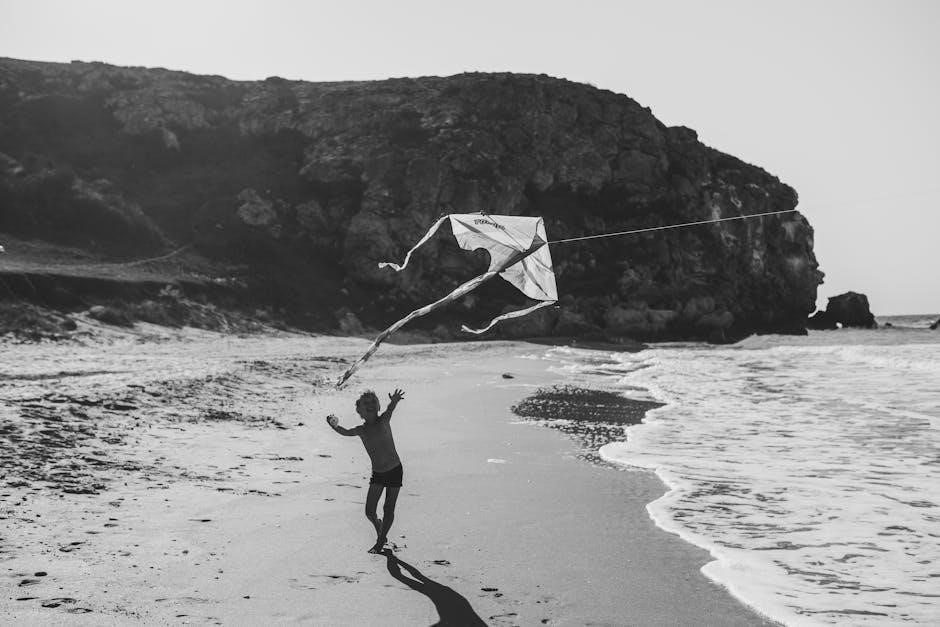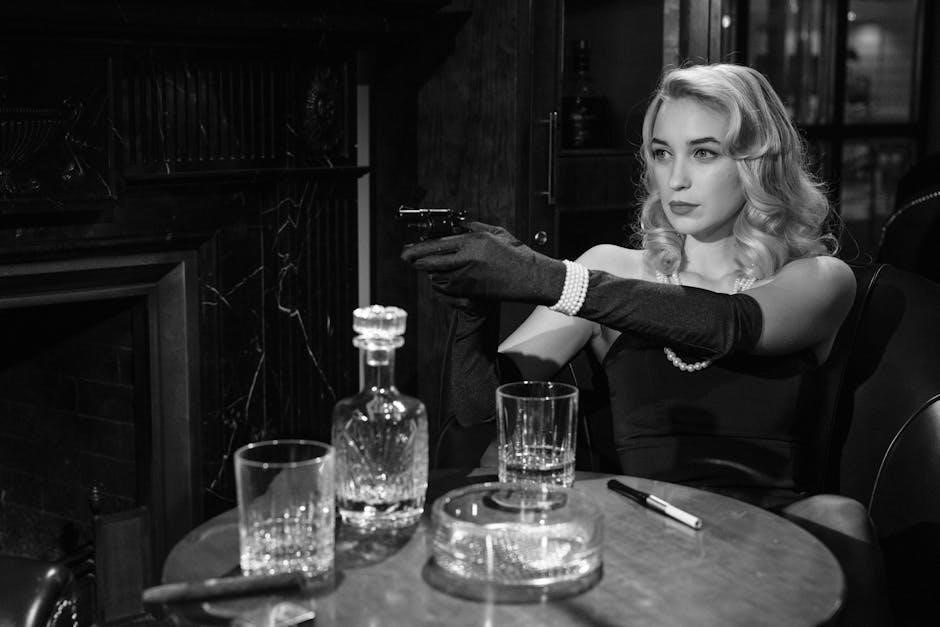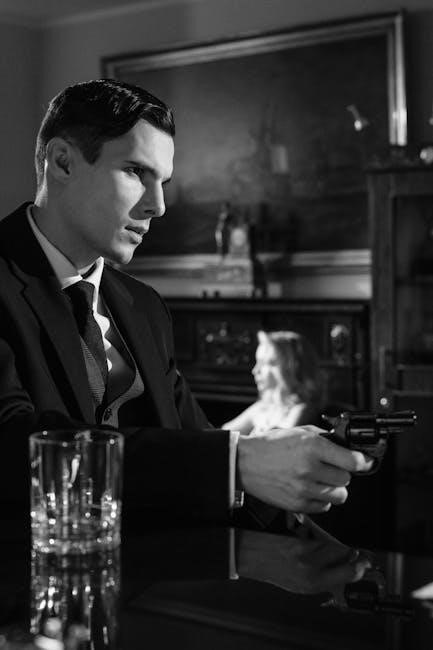chasing lincoln’s killer pdf

Chasing Lincoln’s Killer PDF: An Overview
James L. Swanson’s “Chasing Lincoln’s Killer” offers a gripping narrative, detailing the assassination of Abraham Lincoln and the subsequent twelve-day manhunt for John Wilkes Booth. Archival materials are used throughout to tell this story.
“Chasing Lincoln’s Killer,” penned by James L. Swanson, meticulously recounts the assassination of President Abraham Lincoln on April 14, 1865, and the intense pursuit of his assassin, John Wilkes Booth. The narrative commences amidst the backdrop of the Civil War’s conclusion, a period when the nation grappled with profound division and uncertainty.
Booth, a celebrated actor, harbored fervent Confederate sympathies, leading him to orchestrate a conspiracy targeting key Union leaders. The book vividly portrays the events leading up to the assassination at Ford’s Theatre, capturing the atmosphere of that fateful night. Following the assassination, the story transitions into a thrilling manhunt, as Secretary of War Edwin Stanton spearheads the effort to apprehend Booth and his accomplices.
Swanson masterfully interweaves historical accounts, drawing from archival materials, to provide a comprehensive and suspenseful narrative, illustrating the shock and mourning that gripped Washington D.C. and the nation.

Abraham Lincoln’s Assassination
Abraham Lincoln’s assassination, a pivotal moment chronicled in “Chasing Lincoln’s Killer,” occurred on April 14, 1865. John Wilkes Booth, the assassin, forever etched his name in the history books.
The Date: April 14, 1865
April 14, 1865, a date forever etched in American history, marks the tragic assassination of President Abraham Lincoln. “Chasing Lincoln’s Killer” meticulously recounts the events of that fateful Good Friday. The nation, still reeling from the Civil War’s end, was plunged into mourning. At Ford’s Theatre, John Wilkes Booth, a famous actor, carried out his deadly plan. His act not only extinguished the life of the president, but also shattered the hopes of a nation seeking healing and reconciliation. The detailed narrative captures the shock and disbelief that gripped Washington D.C., and the wider country. Booth’s actions set in motion a frantic twelve-day manhunt, detailed in the book, forever changing the course of American history, during a time of mourning.
The Assassin: John Wilkes Booth
John Wilkes Booth, a prominent actor from a renowned theatrical family, became infamous for his role as Abraham Lincoln’s assassin. “Chasing Lincoln’s Killer” delves into Booth’s background, motivations, and actions leading up to the assassination. The book portrays Booth as a charismatic figure driven by radical beliefs. His act was a desperate attempt to revive the Confederate cause after the Civil War’s conclusion. Booth’s familiarity with Ford’s Theatre, where he committed the crime, aided his initial escape. The book meticulously traces his movements and the network of accomplices who aided him during the frantic twelve-day manhunt. Booth’s actions plunged the nation into mourning and forever changed his legacy from a celebrated actor to a reviled figure in American history. Booth was quickly identified.

The Manhunt for John Wilkes Booth
“Chasing Lincoln’s Killer” details the relentless pursuit of John Wilkes Booth after Lincoln’s assassination. The book highlights the tense moments and desperate measures taken during the twelve-day search for the killer;
The 12-Day Pursuit
The 12-day manhunt following Abraham Lincoln’s assassination is a central focus of “Chasing Lincoln’s Killer.” James L. Swanson masterfully recounts the dramatic chase, drawing from extensive archival materials to create a vivid and suspenseful narrative.
The pursuit was initiated immediately after John Wilkes Booth fatally shot President Lincoln on April 14, 1865. Booth, along with his accomplice David Herold, fled Washington D.C., setting off a frantic search by Union soldiers and detectives.
Secretary of War Edwin Stanton played a crucial role in coordinating the manhunt, determined to bring Lincoln’s killer to justice. The pursuit led through Maryland and into Virginia, with the nation gripped by every development.
The book details the various hideouts and close calls that Booth and Herold experienced as they evaded capture. Swanson’s account captures the intensity and desperation of both the pursued and the pursuers during those twelve fateful days.
Secretary of War Edwin Stanton’s Role
Edwin Stanton, Abraham Lincoln’s Secretary of War, played a pivotal role in the aftermath of the assassination, as detailed in “Chasing Lincoln’s Killer.” He took immediate control of the situation, spearheading the investigation and the relentless pursuit of John Wilkes Booth.
Stanton’s determination to bring the assassins to justice was unwavering. He mobilized federal troops and detectives, setting in motion the 12-day manhunt that gripped the nation. His leadership was crucial in coordinating the complex operation.
The book highlights Stanton’s meticulous approach, as he gathered evidence and pieced together the conspiracy surrounding Lincoln’s death. He understood the gravity of the situation.
Beyond the pursuit of Booth, Stanton also oversaw the investigation into the broader plot, seeking to uncover all those involved in the conspiracy. His efforts were critical in ensuring that justice was served in the wake of the tragedy that affected the nation.

Key Figures in the Assassination Plot
“Chasing Lincoln’s Killer” delves into the network of individuals involved in the conspiracy, examining their motivations and roles. John Wilkes Booth was not alone; others aided and abetted him.
John Wilkes Booth’s Accomplices
John Wilkes Booth did not act alone in his heinous crime; he was supported by a network of accomplices, each playing a role in the assassination plot against President Abraham Lincoln. These individuals, driven by varying motivations, contributed to the tragic events of April 14, 1865, and the subsequent manhunt.
The book “Chasing Lincoln’s Killer” meticulously details the involvement of these key figures, shedding light on their backgrounds, relationships with Booth, and the extent of their participation in the conspiracy. From providing shelter and supplies to actively assisting in Booth’s escape, these accomplices were instrumental in the aftermath of the assassination.
Understanding the roles and motivations of Booth’s accomplices is crucial to grasping the full scope of the assassination plot and its impact on the nation. Their actions not only facilitated Booth’s escape but also prolonged the nation’s agony and uncertainty in the wake of Lincoln’s death.

The Nation’s Reaction to Lincoln’s Death
The nation was shocked after Lincoln’s assassination. “Chasing Lincoln’s Killer” recounts the mourning in Washington D.C., and the tense moments as the killers hid from authorities.
Mourning in Washington D.C.
In the wake of Abraham Lincoln’s assassination, Washington D.C. plunged into profound mourning. “Chasing Lincoln’s Killer” vividly portrays the shocked reaction that swept through the capital, as news of the president’s death spread like wildfire. The city, still reeling from the end of the Civil War, now faced a new crisis, a deep wound inflicted upon the nation’s soul. The streets filled with grief-stricken citizens, their faces etched with disbelief and sorrow.
Public buildings were draped in black, a visual representation of the darkness that had descended upon the country. The air was thick with a palpable sense of loss, as people struggled to comprehend the magnitude of the tragedy. The assassination not only took the life of a beloved leader but also shattered the hopes of a nation yearning for healing and reconciliation. The mourning in Washington D.C. became a symbol of the collective grief experienced across the United States.

The Killers in Hiding
“Chasing Lincoln’s Killer” depicts the tense moments experienced by John Wilkes Booth and his accomplices as they desperately sought refuge after the assassination, hidden away from authorities in various hideouts.
Tense Moments and Hideouts
After Abraham Lincoln’s assassination, “Chasing Lincoln’s Killer” vividly portrays the killers’ desperate flight and the tense atmosphere surrounding their hideouts. The narrative alternates between the nation’s shock and mourning in Washington D.C. and the fugitives’ precarious situation. John Wilkes Booth and his accomplices experienced constant fear of discovery as they moved from one hiding place to another, always looking over their shoulders.
These tense moments are a focal point of James L. Swanson’s account, derived from archival materials, which emphasize the emotional weight of their desperate attempts to evade capture. The story captures the killers’ anxieties and the risks they faced while on the run. Each hideout presented its own challenges, adding layers of suspense to the narrative as the pursuit intensified. The killers knew that their freedom was on the line, turning ordinary moments into tests of courage.

Historical Context
“Chasing Lincoln’s Killer” unfolds in 1865, as the Civil War concludes. Abraham Lincoln led the Union to victory against the Confederacy. The assassination occurred during a period of immense national change.
The End of the Civil War in 1865

The year 1865 marked the end of the devastating four-year Civil War, a conflict that had deeply divided the United States. President Abraham Lincoln, leading the Union forces, saw the nation through to victory against the Confederacy. The atmosphere was charged with both relief and uncertainty as the country grappled with the immense task of Reconstruction.
The war’s conclusion brought about significant shifts in the social and political landscape, including the abolition of slavery and the promise of a new era for African Americans. However, deep-seated tensions and resentments lingered, particularly among those who had supported the Confederacy. These sentiments, fueled by loss and disillusionment, created a fertile ground for extremism and dissent.
Lincoln’s vision for a unified and reconciled nation was met with resistance from various factions, each with their own agendas and grievances. It was within this complex and volatile environment that the events of “Chasing Lincoln’s Killer” unfolded, forever altering the course of American history.

James L. Swanson’s Account
James L. Swanson’s book “Chasing Lincoln’s Killer” delivers a captivating account of the pursuit of John Wilkes Booth, drawing from extensive archival materials to reconstruct the events of that fateful time.
Drawing from Archival Materials
James L. Swanson’s “Chasing Lincoln’s Killer” meticulously reconstructs the events surrounding Abraham Lincoln’s assassination through extensive research and reliance on archival materials. These primary sources provide a powerful and authentic perspective on the historical events, offering readers a glimpse into the past. Swanson skillfully weaves together official documents, eyewitness accounts, and personal letters to create a comprehensive narrative. This immersive approach allows readers to experience the intensity of the manhunt for John Wilkes Booth and the emotional turmoil of a nation in mourning.
The use of archival materials lends credibility and depth to Swanson’s account, distinguishing it from purely fictionalized portrayals. By grounding the narrative in historical evidence, Swanson provides a nuanced and compelling examination of one of the most significant events in American history. The book showcases Swanson’s dedication to historical accuracy and his ability to bring the past to life through meticulous research and engaging storytelling. The archival materials truly paint a clear picture.

Chapter 1 Summary and Analysis
Chapter 1 of “Chasing Lincoln’s Killer” sets the stage for the tragic events to follow, beginning on Good Friday, April 14, 1865. The chapter introduces John Wilkes Booth, highlighting his background as a member of a theatrical family and hinting at his motivations for the assassination plot. Booth’s character is presented with complexity, revealing his charisma and ambition alongside his growing discontent with the Union’s victory in the Civil War.
The chapter also provides a glimpse into the atmosphere of Washington D.C. at the time, with the war drawing to a close and the nation grappling with the challenges of reconstruction. Swanson masterfully creates a sense of impending doom, foreshadowing the events that will soon shatter the fragile peace. The analysis of Chapter 1 reveals the intricate details and the historical setting. This lays the groundwork for the thrilling pursuit that will unfold throughout the book.